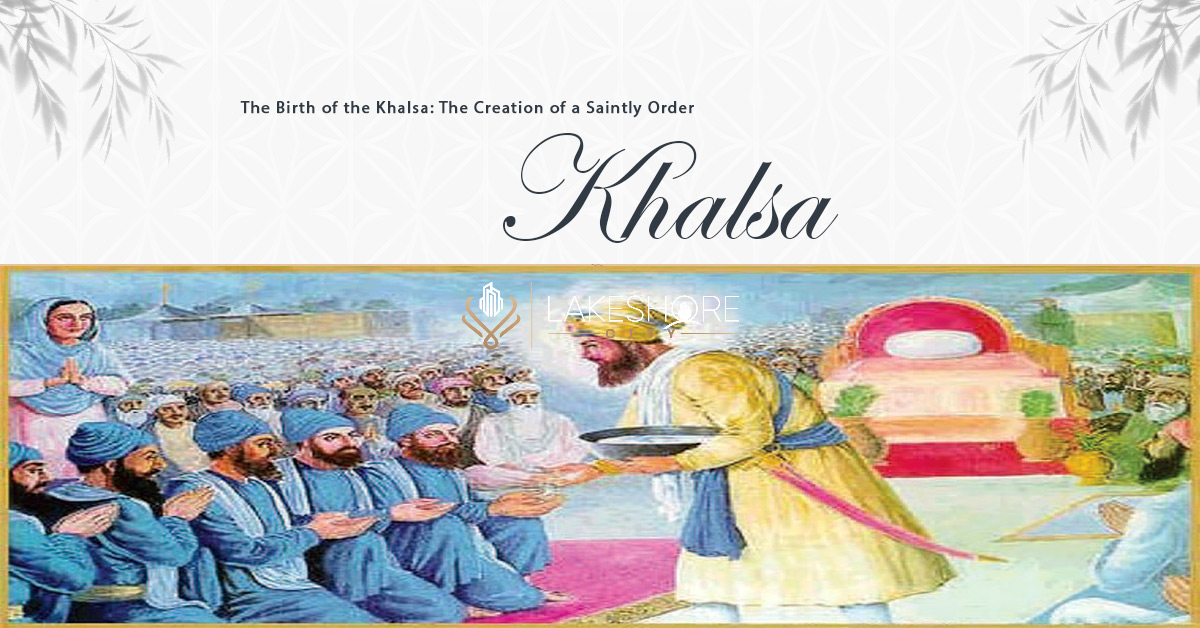In 1699, during the celebration of Baisakhi, a major harvest festival in the Punjab, a new sect of Sikhs emerged. As was customary on Baisakhi, Sikhs from all around the region converged. They converged on Guru Gobind Singh’s Anandpur, the location of his administrative center, at his request.
Guru Gobind Singh, according to Sikh legend, emerged from his tent that day and issued a chilling command. He pleaded for the heads of five Sikhs to be sacrificed. People were scared and kept quiet. However, after he called out, five Sikhs came to help. The Guru had hidden five goats in a tent and led everyone inside to see them. The Guru came back for the next brave Sikh after each of them had entered the tent, his sword dripping with the blood of one of the goats. It seems that all five men were killed before the fighting stopped. Then, for quite some time, Guru Gobind Singh remained inside the tent. When he did, the five Sikhs trailed behind him wearing brand new clothes just like the Guru’s and brandishing brand new swords.
After much ambiguity, Guru Gobind Singh revealed his true intentions. He planned to form a new sect of Sikhism called the Khalsa. The Arabic word “Khalis,” which means “pure,” is where we get this word. God’s saints and soldiers, the Khalsa would be composed of brave and devoted individuals who uphold the greatest moral standards. Just as the five Sikhs had gladly offered their life to the guru, members of the Khalsa would never hesitate to perform their responsibility to God and their fellow human beings.
The panj piaras, or “beloved five,” were the first five people to be formally initiated into the Khalsa. Amrit, the nectar made by mixing sugar crystals with water using a double-edged sword, and the words of Guru Nanak’s Japji and other hymns of the gurus, were shared among them. Afterward, Guru Gobind Singh initiated a large number of people into the Khalsa. He emphasized the need to always display the five insignia of the Khalsa: the kirpan, a little sword; the karha, a bracelet made of iron or steel; the kachhera, a military style of undershorts; the kangha, a wooden comb worn in the hair; and the kes, uncut hair, covered with a turban. Singh (meaning “lion”) and Kaur (meaning “princess”) were the new names given to the male and female initiates, respectively. A fresh beginning had arrived. The khalsis were instructed to think of themselves as the biological offspring of Guru Gobind Singh and Sahib Kaur, both of whom were born in Anandpur.
Our Featured Article:
Read More: Sikhs Body Drums Up Support for Khalistan
Don’t miss the chance to invest with Lakeshore! Secure your investment today by investing your financial investment with Lakeshore in the following available options like Lakeshore City, Lakeshore Club, and Lakeshore Farms.
For More updates, please Contact +92 335 7775253 or visit our website https://lakeshorecity.com/
Lakeshore City is the upcoming elite lifestyle at Khanpur Dam. Offering no parallel amenities for the members and owners of distinguished farmhouses.
Become Part of Luxurious Lifestyle
Contact: 0335 7775253



